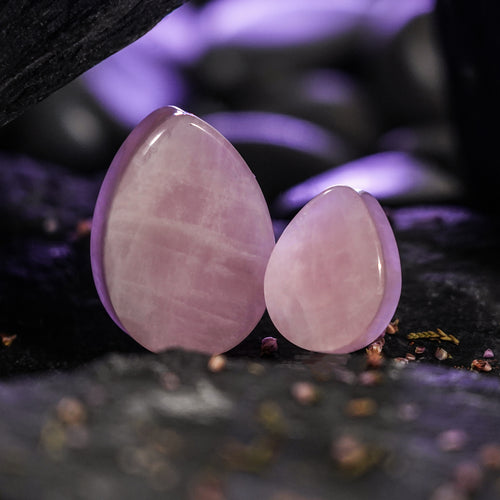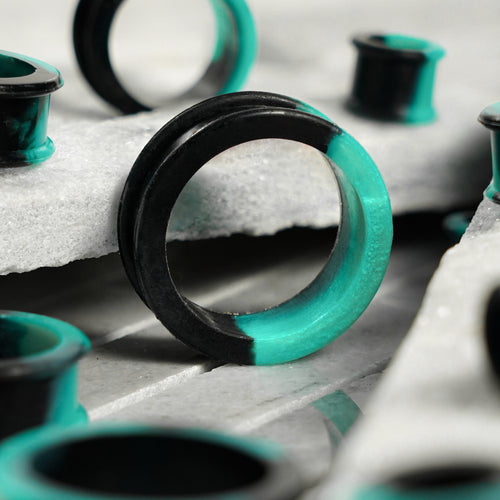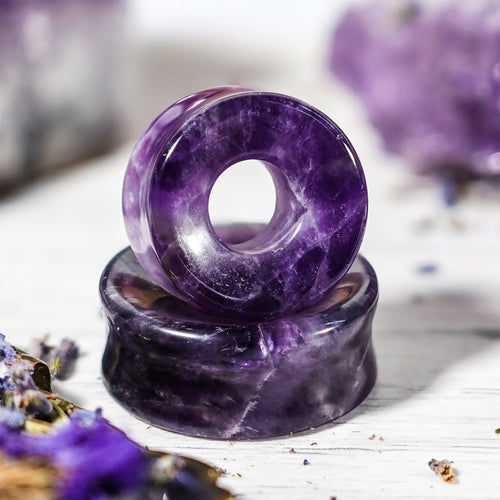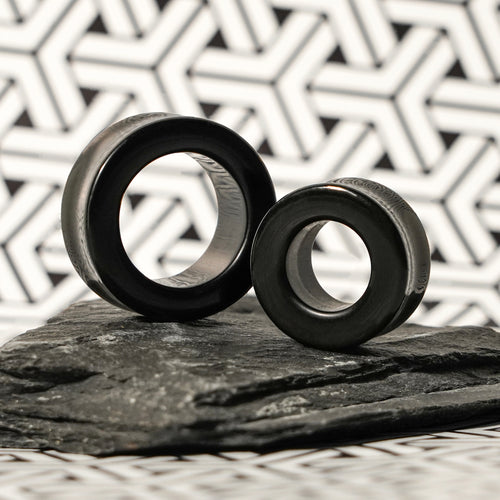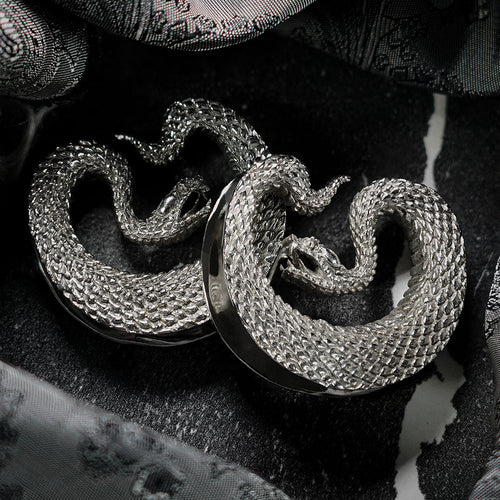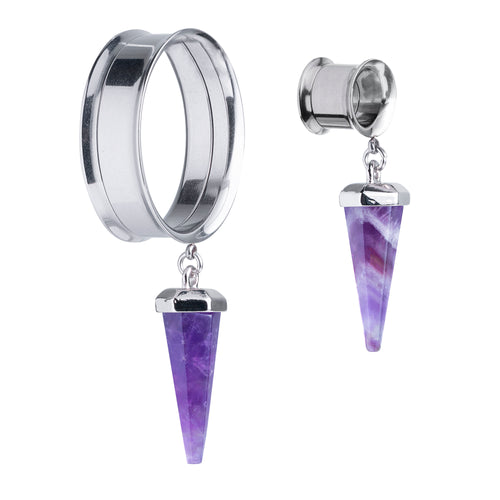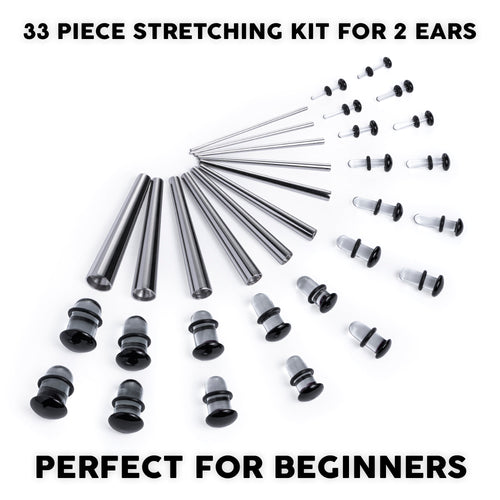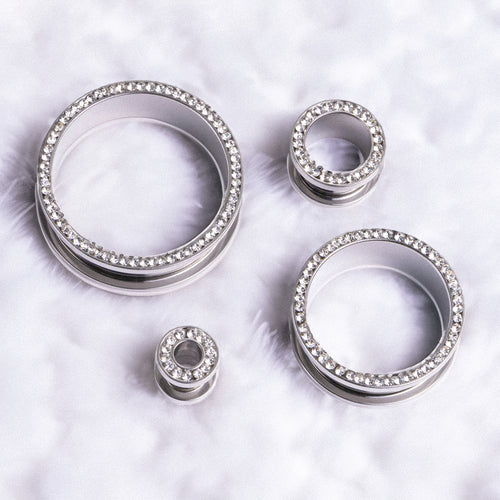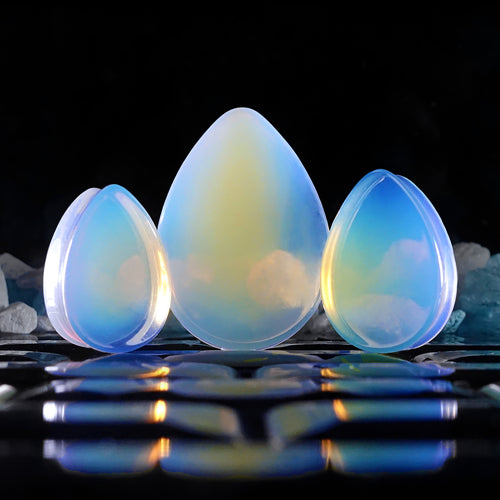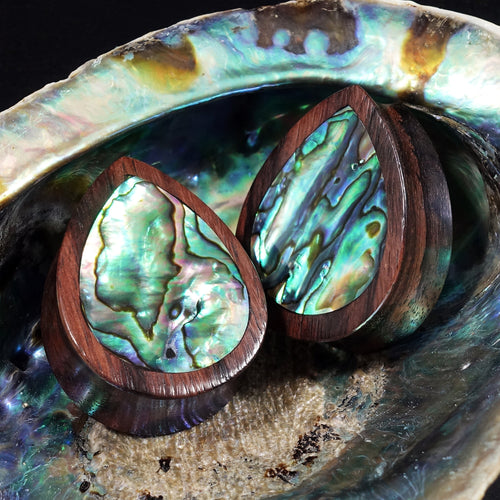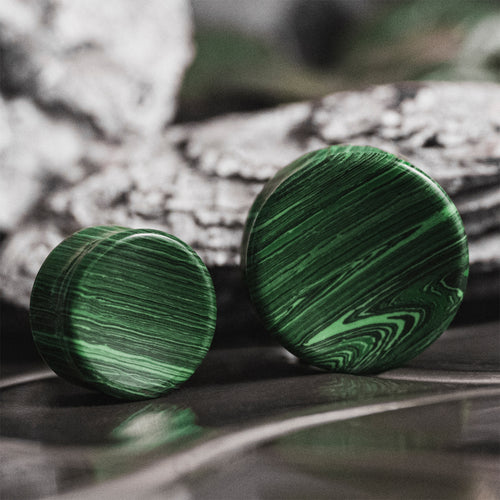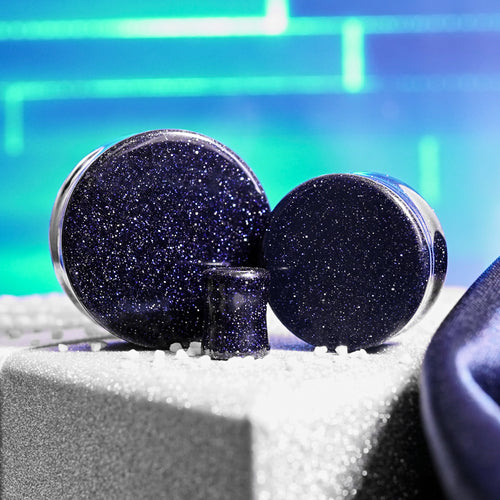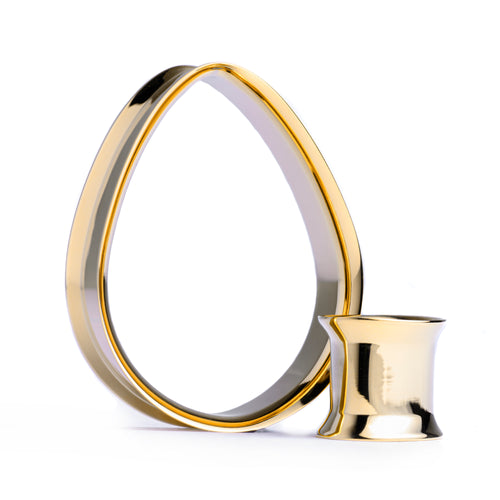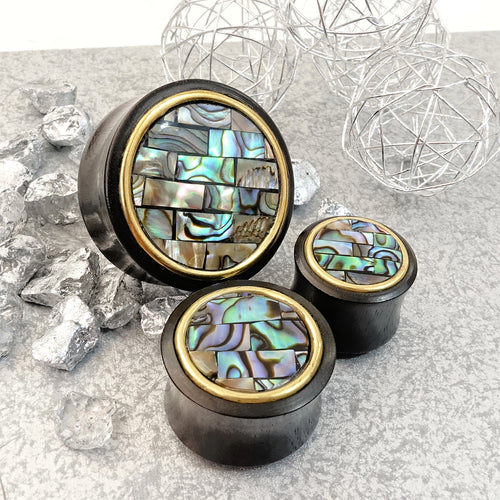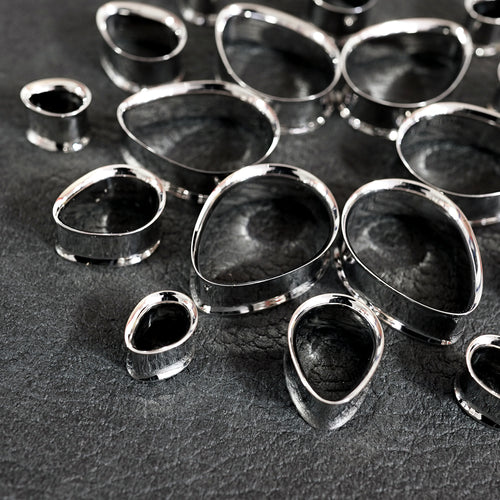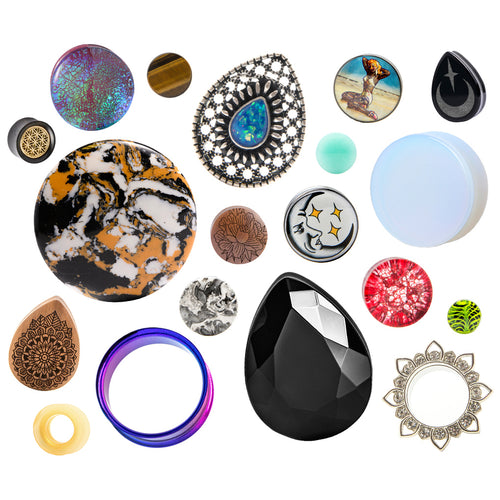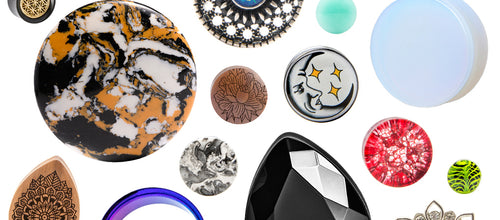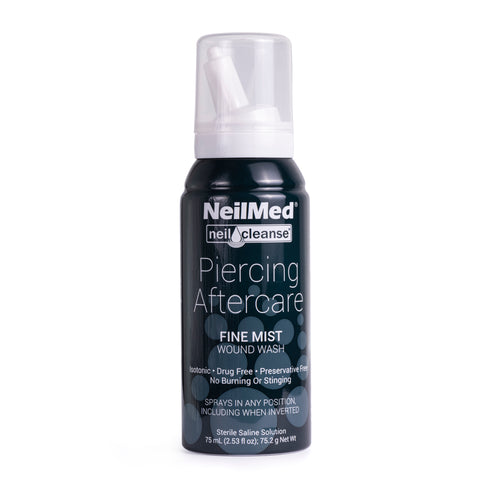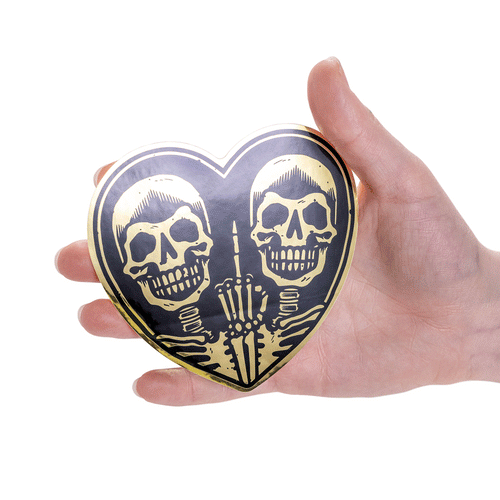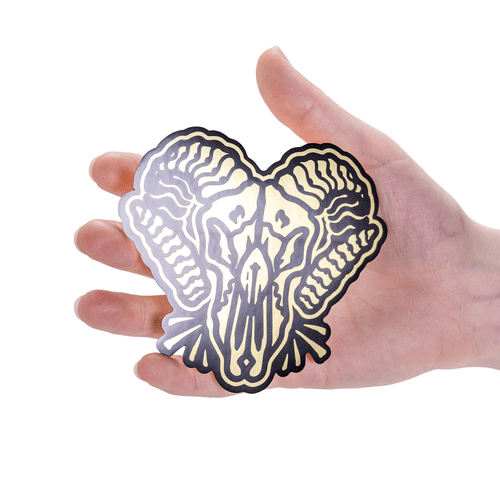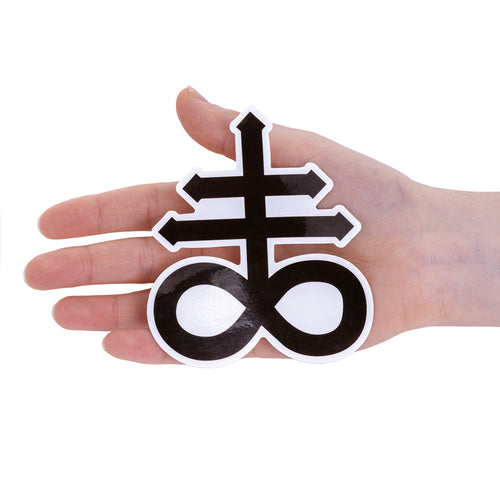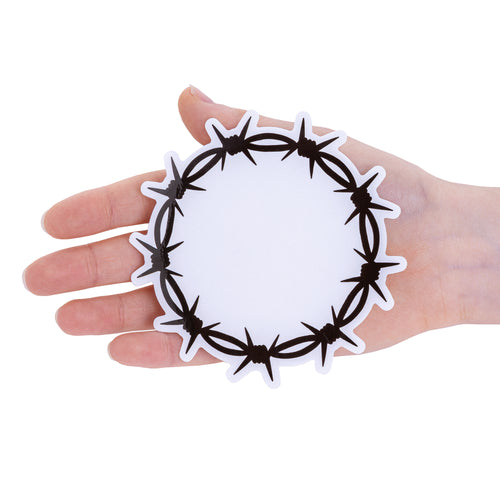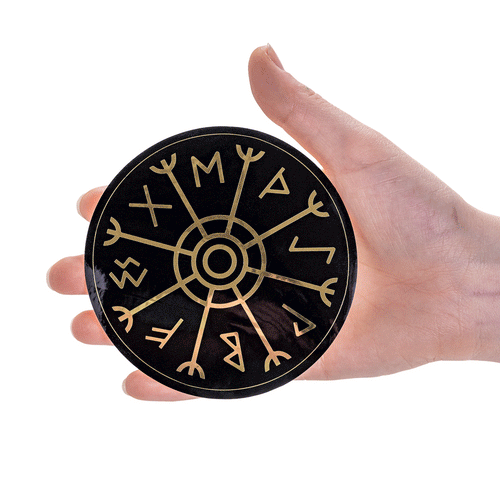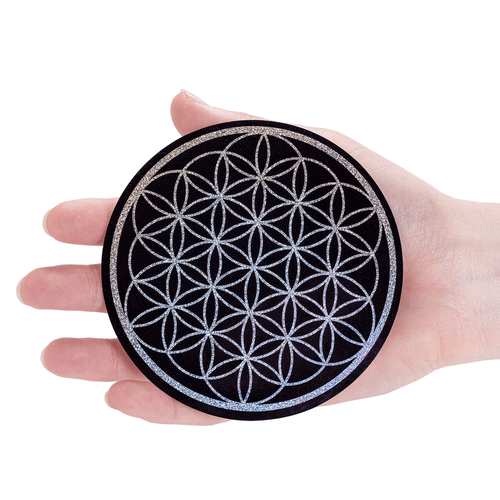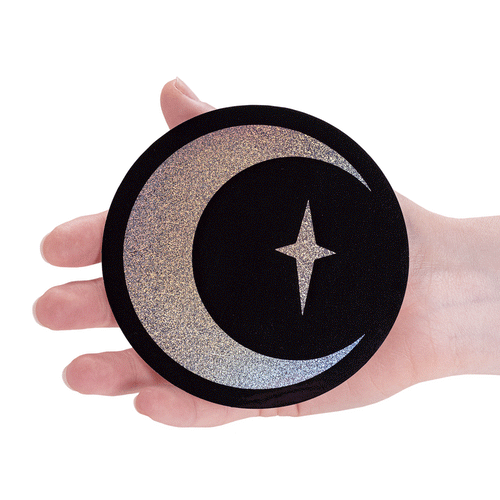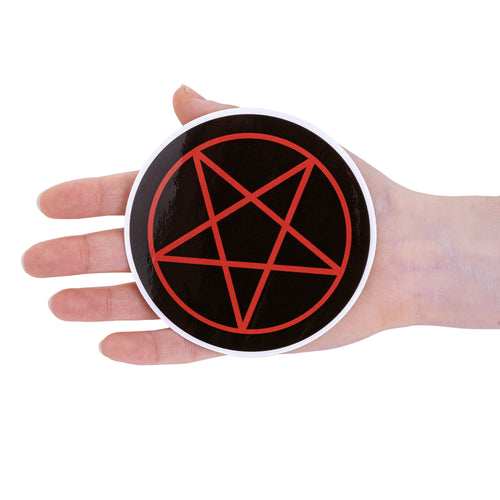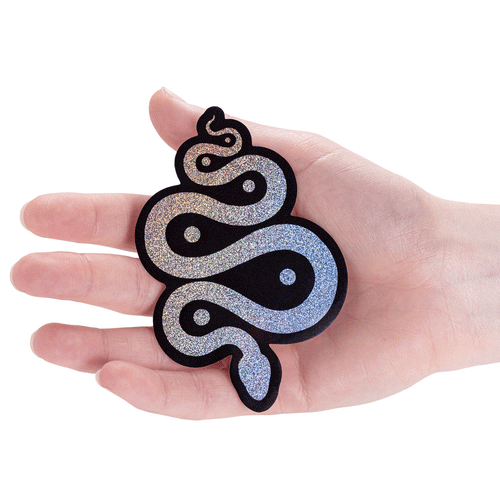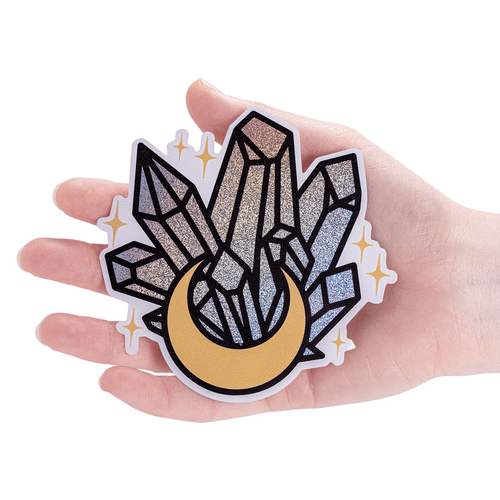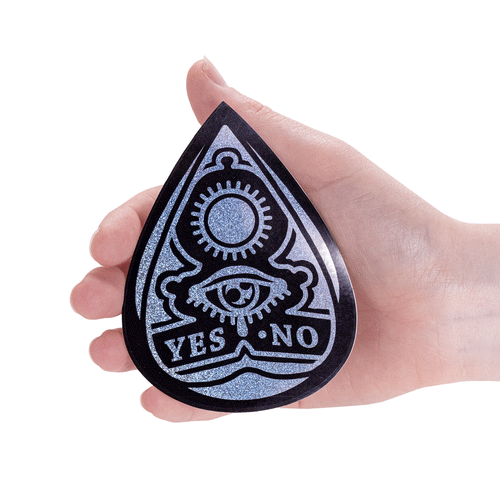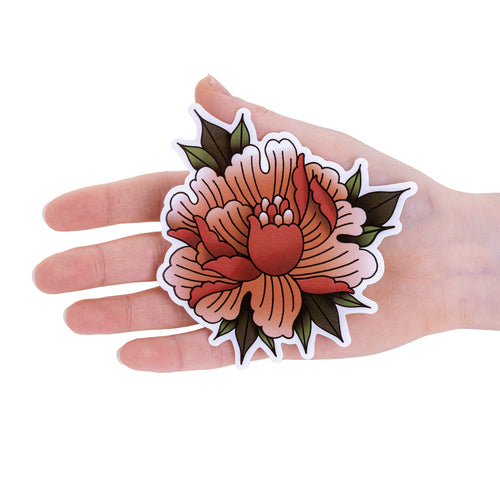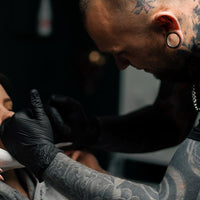
GET SOCIAL WITH US
RECENT ARTICLES
Newsletter
Keep up-to-date with the latest promotions, news and releases!
Best Material For Stretching Ears - A Guide to Materials for Plugs, Gauges & Tunnels
Choosing the right type of material for your plugs and gauges makes the difference between wearing them comfortably and having to deal with ear irritation and other issues. Plus ear stretching jewellery materials have evolved to create some incredible effects that you should add to your collection!
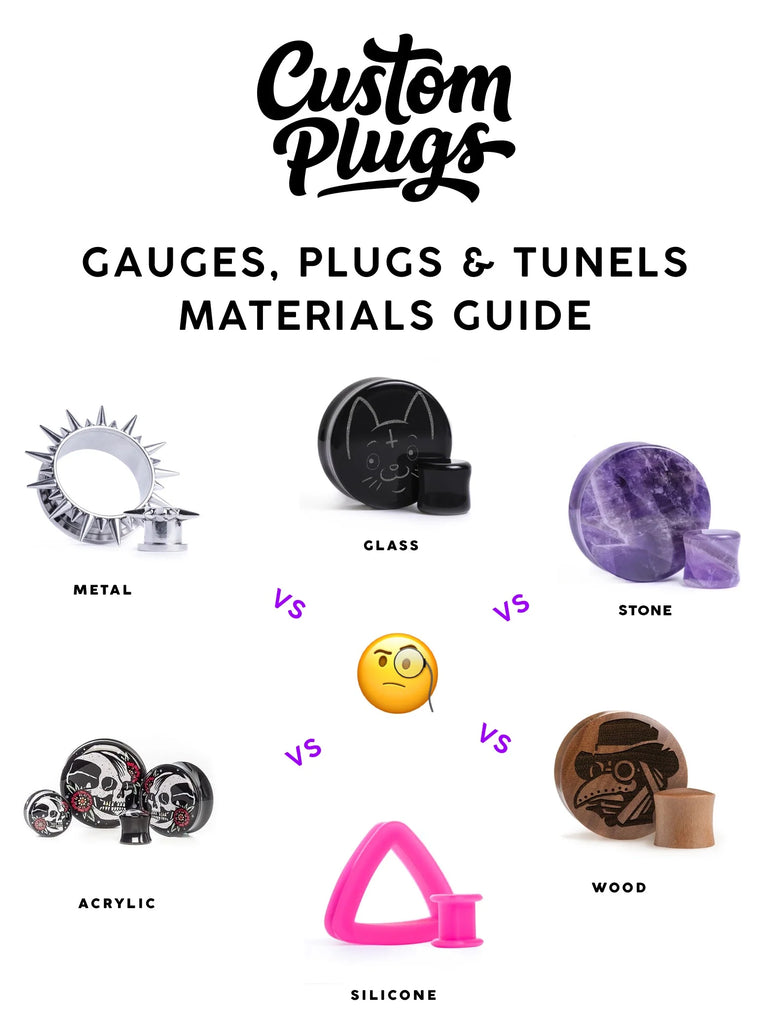
As with any other type of body modification, it’s important to take care of the piercing to avoid infection, particularly as stretches will need to be healed over and over again as you increase in size. Knowing which materials are good for stretching your ears, and which can only be worn on healed ears can save you a lot hassle in the future.
We’ve created a comprehensive guide that will give you an overview of all the materials that plugs and gauges are made of, as well as their properties, tips on how to wear them safely, and how to care for them.
- Steel Gauges, Plugs & Tunnels
- Silver Gauges, Plugs & Tunnels
- Gold Gauges, Plugs & Tunnels
- Niobium Gauges, Plugs & Tunnels
- Glass Plugs Gauges, Plugs & Tunnels
- Bone and Horn Gauges, Plugs & Tunnels
- Wooden Gauges, Plugs & Tunnels
- Stone Gauges, Plugs & Tunnels
- Acrylic Gauges, Plugs & Tunnels
- Silicone Gauges, Plugs & Tunnels
- How to choose the right plug material for you
- Titanium Gauges, Plugs & Tunnels
Steel Gauges, Plugs & Tunnels
Stainless steel is a popular material used for body jewelry, piercings, plugs, and tunnels and is often more affordable than titanium.

Stainless steel for healing ear stretches
As you can make stainless steel in the autoclave it makes sterilisation easy which makes it another option for piercings.
It’s a non-porous material making it great for healing ears, it can be slightly heavier and the small nickel content that makes it more durable can cause an allergic reaction in some people.
That said, all stainless steel piercings, plugs, and gauges are treated with a layer of chromium oxide, which enables safe wearing since the nickel is locked away to avoid contact with the skin. Over time, this layer can get worn down, resulting in direct contact, so it’s not advised for people who have sensitivities.
There are steel alloys that contain less nickel, like F138 steel, which is usually used for implants since it’s one of the few materials that is biocompatible (meaning your body won’t react to it).
Taking care of stainless steel jewellery
Stainless steel doesn’t rust but it can easily be scratched or stained, so you should regularly clean your metal plugs with soap and air dry. There are many people who advocate for using toothpaste for cleaning stainless steel but this can actually dull it unless you choose a brand that is non-whitening and without silica.
Shop Metal Plugs & Tunnels
Silver Gauges, Plugs & Tunnels
Silver is widely used for various jewelry options, but not as much for body modifications, plugs and tunnels. As a material it’s actually quite ‘soft’ which means it gets scratched, dented and misshapen easily which isn’t great for really big stretches as a day-to-day material.

Often you’ll see plugs described as ‘silver’ but this refers commonly to the colour and are in fact made from surgical steel.
Avoid silver for healing ears
Silver, by nature, isn’t very pure, often consists of several alloys, and has quite a lot of nickel that causes allergies in some people. This is also why it’s not a great choice for healing ear stretches.
Silver ear plugs are not all bad
There are some instances where you’ll find silver plated jewellery, or more commonly silver as part of a decoration instead. If your ears are fully healed, and you don’t have allergies, you likely won’t have an issue with silver ear plugs, and they can be a great option for weddings or special occasions. But it’s best not to wear them all the time.
Maintaining silver ear plugs
Because silver has a tendency to tarnish it can be a pain to clean! You can pick up silver polishing cloths which are your best bet to clean them. Alternatively use soapy water, dry properly, and if you need to polish, try using a soft cloth and brown vinegar.
Gold Gauges, Plugs & Tunnels
Gold gauges and plugs have been worn since ancient times and are a popular pick today as well. As a material, gold should be at least 14 or 18 carat, but ideally 24 carat to limit the number of impurities.
The downside is that gold, especially with higher carat count, becomes very soft, which makes it easy to scratch the surface and cause small grooves where bacteria and debris accumulate easily.
High carat gold is quite expensive, so usually, other types of materials like stainless steel or titanium are either plated in a very thin sheet of gold, or are coloured gold or rose gold to give the desired looks and superior properties in terms of biocompatibility.

If you are considering having gold-plated ones, know that they tend to be short-lived, as the thin layer of gold wears down quickly, which will cause darker spots and discolourations. Typically we sell Gold colored steel.
Niobium Gauges, Plugs & Tunnels
Yet another nickel-free alternative, niobium is a rather new addition in the world of piercings, tunnels, and plugs. It’s very durable as a material which is why it’s common use is for medical-grade implants, but this means it is also great for those with allergies or highly sensitive skin too.
Can you wear niobium with healing ears
As with titanium and steel, it is a non-porous material that is safe for autoclaving and can be worn while your piercings and stretched ears are still healing. It’s very similar to titanium, and can also be anodised (it’s one of the few metals that can be anodised to go completely black.)
The downside is that it’s more expensive than titanium, and as it’s so similar in terms or reactivity and properties, for most people titanium is the better choice.
Glass Plugs Gauges, Plugs & Tunnels
The type of glass used for glass plugs and tunnels is called borosilicate glass, making it resistant to high temperatures, autoclavable, and free of lead or other metals. It’s really easy to take care of, and you pretty much need to treat it like any other glass in your house, clean it with antibacterial soap and dry well before putting in your ears.
Using glass for healing ears
Glass is often used as an alternative to all metal plugs and jewellery as it has the same non-porous properties, so it can also be worn during the healing phase. That said, even though it can be sterilised and is technically safe it’s rarely used for new piercings or stretches because the weight can prolong the healing process.
Glass is more versatile than people think for Plugs
Glass is actually incredibly popular as an ear plug material because of the unique styles, and effects you can create. From see-through options to air pockets, it has a host of brilliant colours and can be made to mimic precious stones and stone plugs but much more affordably. The only downside is that while sturdy, it is more likely to break if dropped from a height so you should take care when handling glass plugs.
Shop Glass Plugs & Tunnels
Bone and Horn Gauges, Plugs & Tunnels
Used in traditional ear stretching in ancient times, bone and horn also give a more earthy, organic feel which is why they are still used today. They are lighter than metal options, but only acceptable for fully healed earlobes.
Bone and horn are not suitable for healing ears
These are highly porous materials where bacteria collects easily, which makes them unsafe for healing ears, especially as they cannot be sterilised well either. They also don’t last as long as other materials because they change colour as you wear them, turning naturally yellow after a while.
Caring for bone and horn ear plugs
To keep them clean, you must use a damp cloth and a combination of lukewarm water and antibacterial soap. After cleaning and drying them well, it’s best to polish them with your preferred oil (jojoba is great) to keep them looking well and avoiding them becoming dry and brittle.
Wooden Gauges, Plugs & Tunnels
Wooden plugs and tunnels are actually very lightweight. Made from organic material, these give a down-to-earth vibe and are often used as a base and are combined with other materials, most commonly precious stones and minerals. They do naturally become darker over time, particularly if you oil them regularly.
Wood Plugs shouldn’t be used on healing ears
As an organic, porous material wood plugs (like with bone and horn) aren’t suitable for new stretches or piercings.
How to care for your wood plugs
They should never be submerged in water, because wood acts like a natural sponge which causes the plug to expand. This also means you should avoid wearing them swimming or in the bath. Keep them clean with a damp cloth and only use water.
Wooden plugs and tunnels also tend to dry out over time, which can make them crack (meaning they are unwearable.) But you can help prolong their life cycle by applying jojoba oil or olive oil after they are clean and dry.
Shop Wood Plugs & Tunnels
Stone Gauges, Plugs & Tunnels
As one of the first ever materials used for piercings, tunnels, and plugs, stone is a popular pick nowadays too. The heaviest of all the organic material types, it’s still not particularly heavy and can weigh less than most metals.
Stone on healing ears is a no
As another porous material stone easily traps bacteria on the surface which for fresh piercings is the quickest way to an infection. You should also avoid stone piercings if your healed ears have become irritated or you have overly sensitive skin as it could cause an irritation.
Cleaning your stone plugs
Stone plugs are actually the easiest organic material type to take care of because of its natural resistance to water. This means you can safely submerge them without risking any deformities, swelling, or cracking. Clean them in a mixture of warm water and antibacterial soap, and dry them well after the soak.
Shop Stone Plugs & Tunnels
Acrylic Gauges, Plugs & Tunnels
Acrylic is a type of plastic that’s affordable, and safe to use for body jewelry. It’s very lightweight and can be used to mimic natural materials like stone or even glass. You can create cool effects by putting various graphics between ‘panes’ of acrylic creating a floating effect.
But you still should avoid them on healing ears
Acrylic is only intended for healed piercings because it is porous by nature. But it’s slightly less so, which is why many who don’t have sensitive skin will use it as a material for tapers or stretching because it’s inexpensive and you need to change sizes every few months.
Still, we would always advise you to go for materials that are safe for healing ears and leave acrylic plugs and tunnels for the final size of your stretched ears once they are fully healed.
How do you sterilise acrylic plugs?
Because it’s sensitive to high temperatures acrylic can’t be sterilised in an autoclave. Instead, you can sterilise them with alcohol or peroxide, both of which are corrosive, so use only small amounts to limit material breakdown or discolouring the design.
The downside of acrylic plugs and tunnels is that they are not as durable as other materials either, and tend to break, wear, or get cracked easily. These cracks can become a breeding ground for bacteria that can cause problems over time, so treat your acrylic tunnels and plugs gently and inspect them for damage before you put them on.
Shop Acrylic Plugs & Tunnels
Silicone Gauges, Plugs & Tunnels
Silicone plugs and silicone tunnels are very soft and rubbery, making them very comfortable to wear overnight or when doing sports. As a material, however, it’s high-maintenance.
Should you wear silicone on healing ears?
It should only be used on healed ears since the surface tends to attract more dust and debris than others, which can lead to irritation and infection in healing ears. It also tends to block seepage that occurs naturally in stretched ears, trapping everything between the plug or tunnel and the skin of the earlobe. This can also cause an infection.
Note: There is an implant grade of silicone that won’t cause irritation, but it’s rarely used to make plugs and tunnels.
Taking care of silicone ear plugs
To keep them clean, you must wash silicone plugs regularly with mild soap and water, then rinse well and make sure they are fully dry before use. To insert them more easily because silicone tends to be a bit ‘sticky’, use jojoba or olive oil. Saline works well too.
Avoid wearing them to swimming pools, as chlorine will discolour them, and don’t clean with alcohol or other corrosives.
Shop Silicone Plugs & Tunnels
Titanium Gauges, Plugs & Tunnels
Titanium is among the most common materials used for initial piercings because it’s light, durable, and is a great choice for those who are sensitive to nickel because it’s nickel free (as opposed to stainless steel.)
Can you use titanium plugs for healing ears?
Yes, and the main reason for Titanium being perfect for healing ears is because it’s non-porous which means you don’t get a bacteria build up in the material itself (that is no excuse for not cleaning though!) As titanium plugs are also lighter they’re easier on the ears and more comfortable when you’re starting out because there is less movement and weight during the healing process.
Caring for titanium plugs
Taking care of your titanium plugs is easy because by nature it doesn’t react or get discoloured with alcohol or peroxide.
Titanium versatility
When it comes to colours, titanium can be highly polished, or alternatively, anodised in different colours, so the choices are endless, making it easy to find something that will suit your unique style.
Overall, the properties of titanium can make them slightly more expensive than other plug materials, but it’s a sound investment for day-to-day wearing.
How to choose the right plug material for you
There’s two things you really need to consider:
1. Where you are at in your stretching journey (and whether you are still healing.)
2. What lifestyle you lead (and whether the material can keep up!)
For everyday wear, it’s best to stick to metal plugs and tunnels that are non-porous and easy to maintain, then have a few others for special occasions.
Most people with stretched ears will have a range of plugs which they change depending on what they are doing. No matter which material you choose, make sure you know how to clean them properly so they remain looking and feeling good for a long time.
Shop All Plugs & Tunnels








-v1657710003014.jpg?512x640&transform=resize=350)
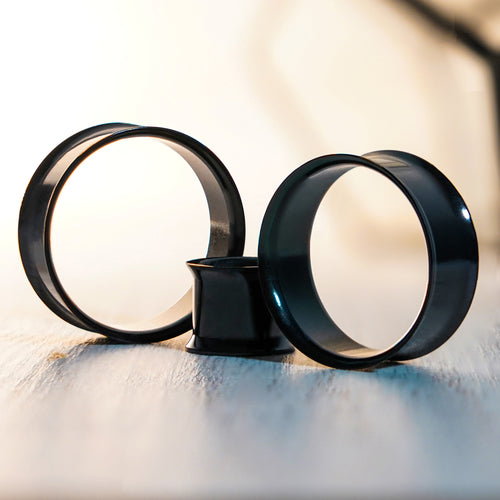



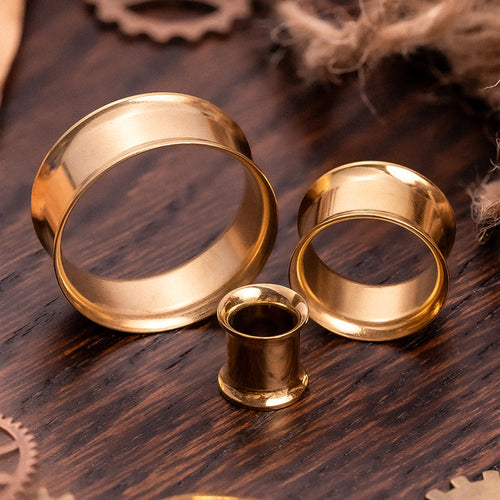

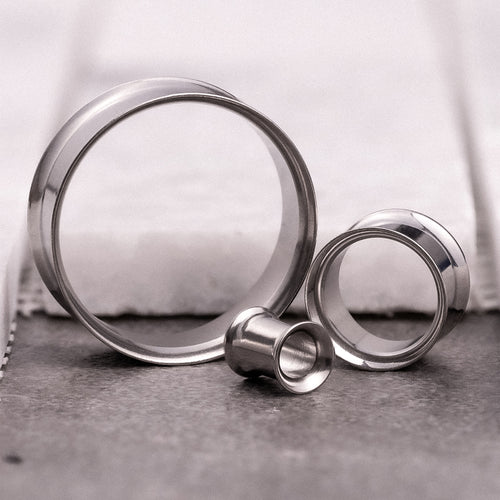

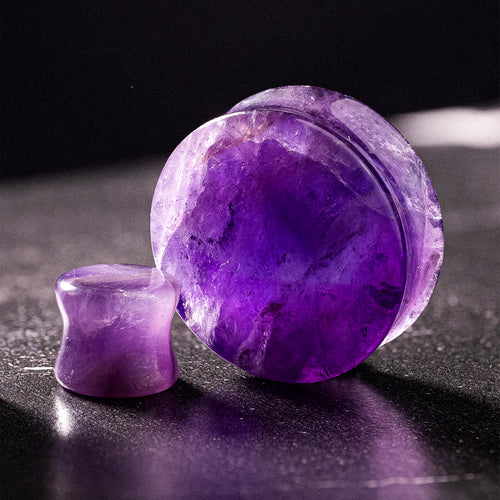

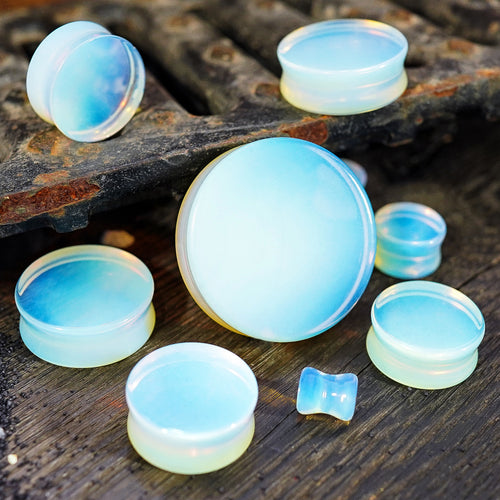

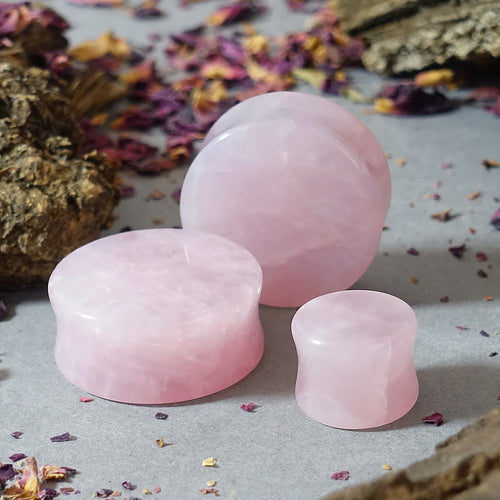
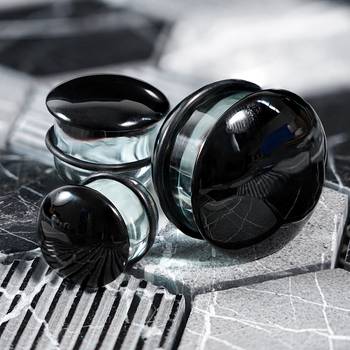
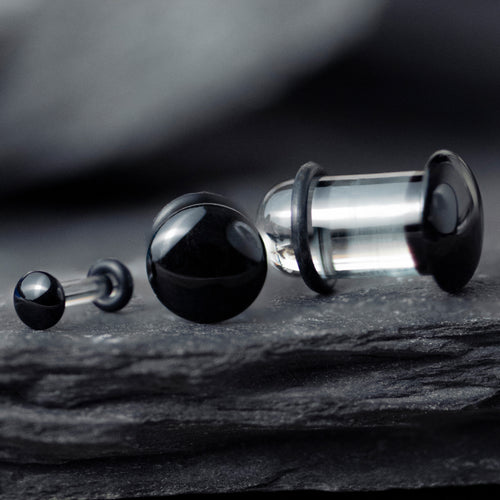
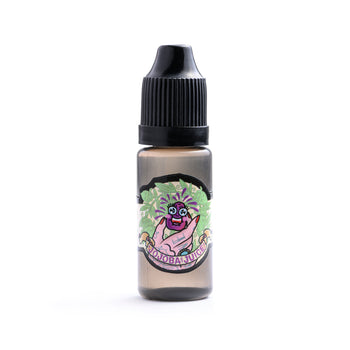
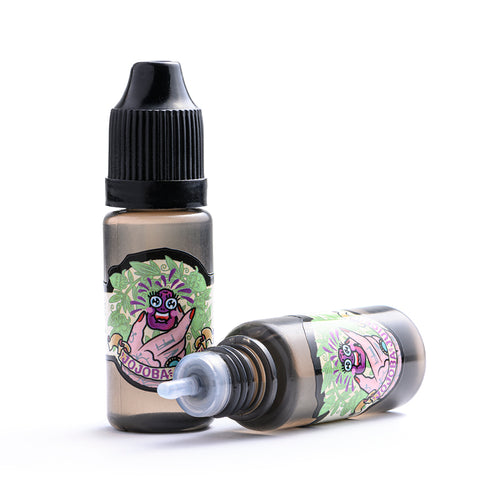
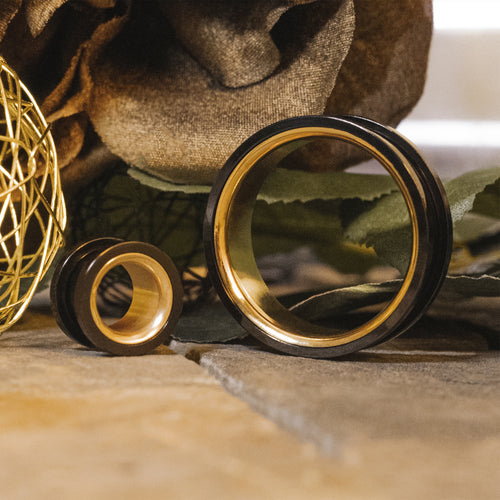

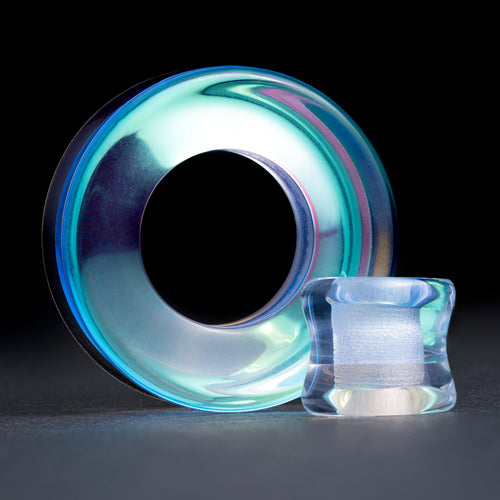



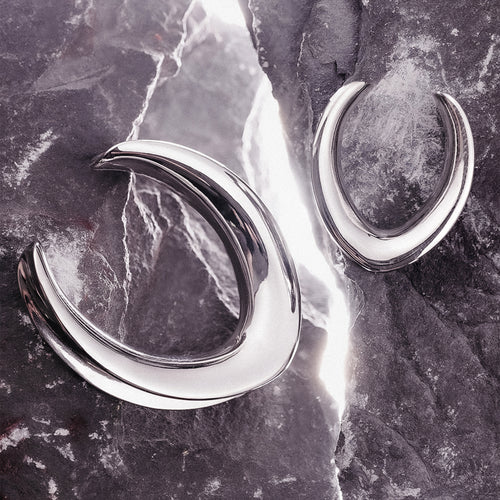

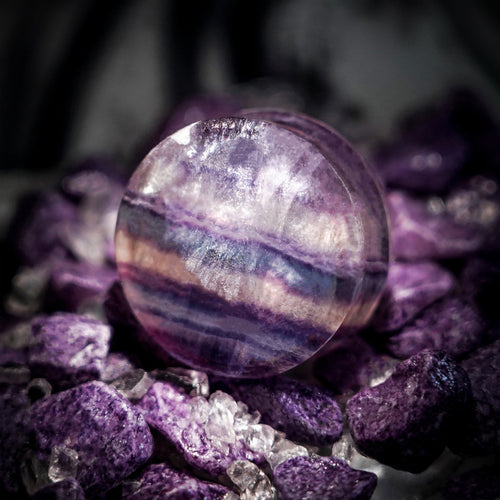

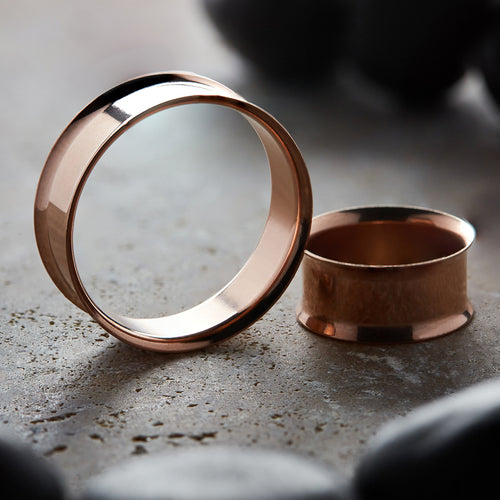
-Photographer-@domdirekt-for-@tenforfifty-v1674724276532.jpg?2400x3000&transform=resize=350)
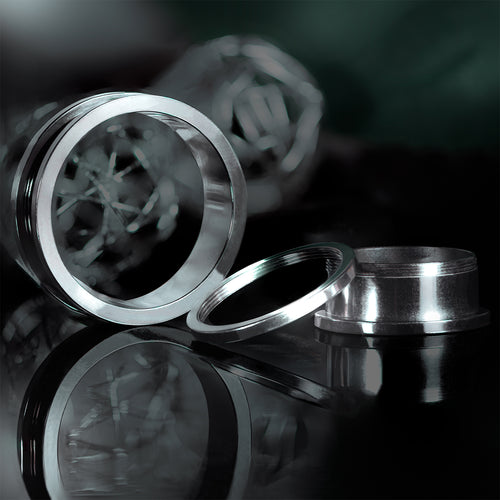

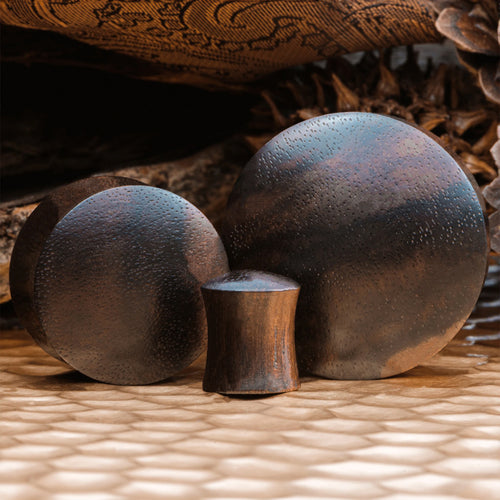

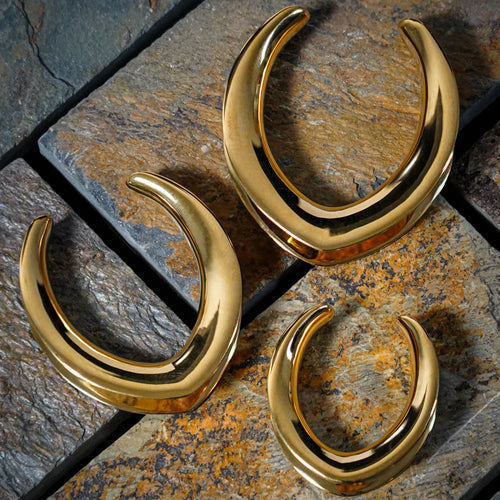

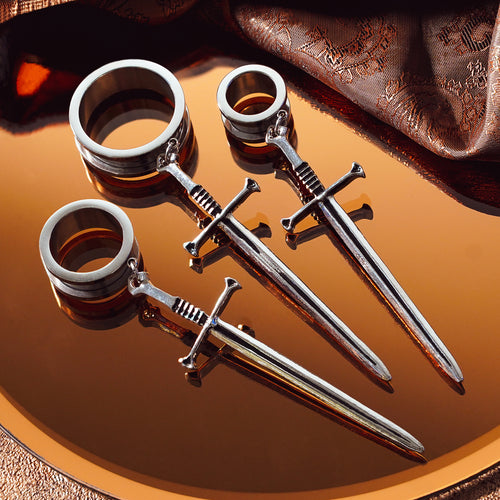



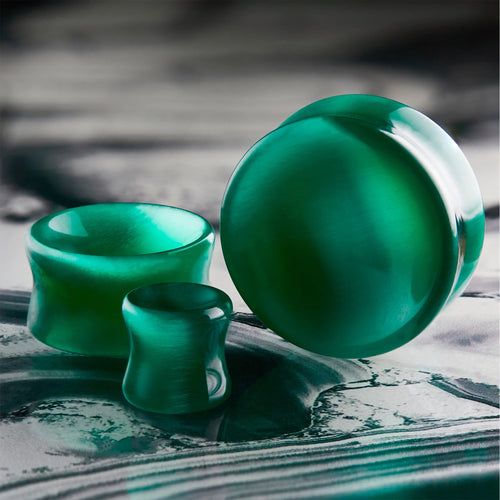

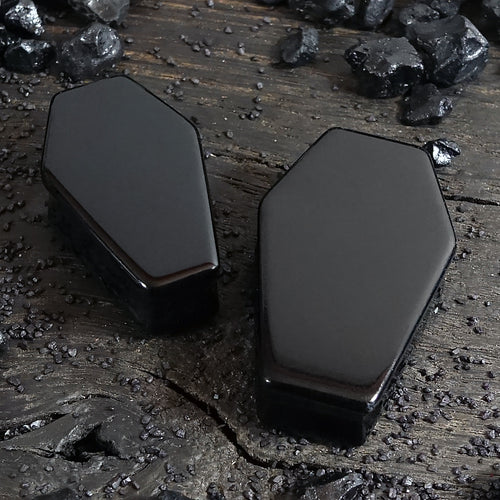

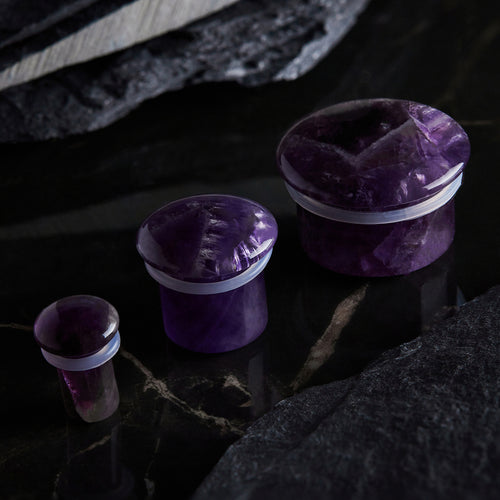

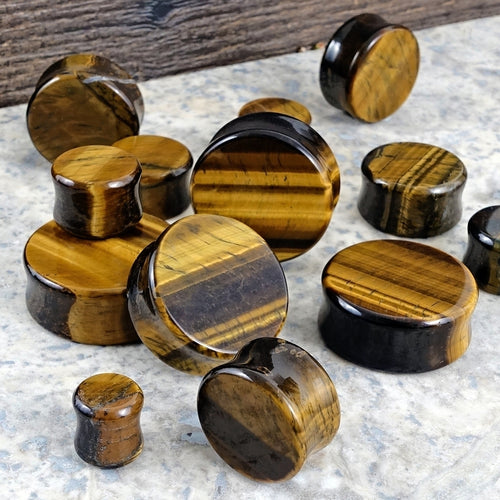

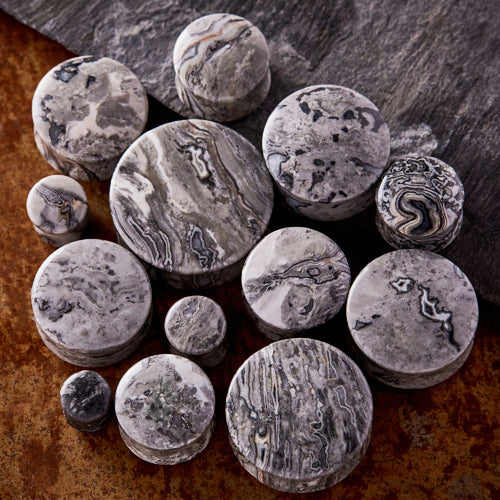

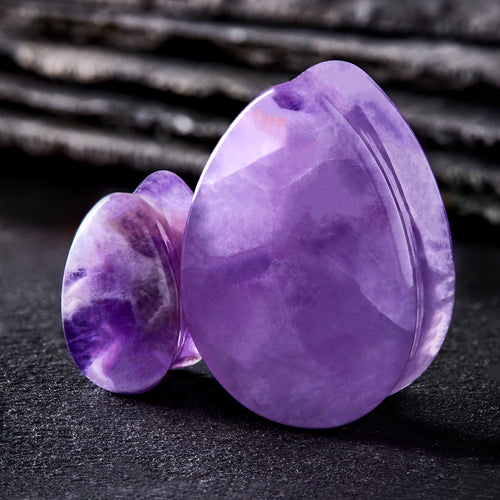

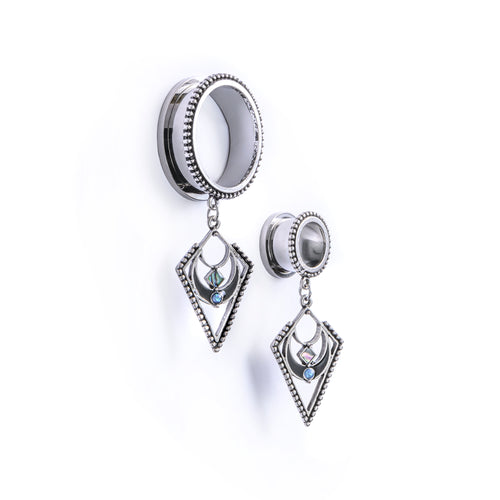

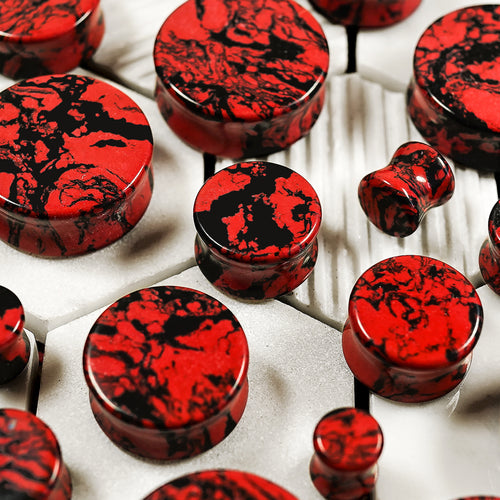

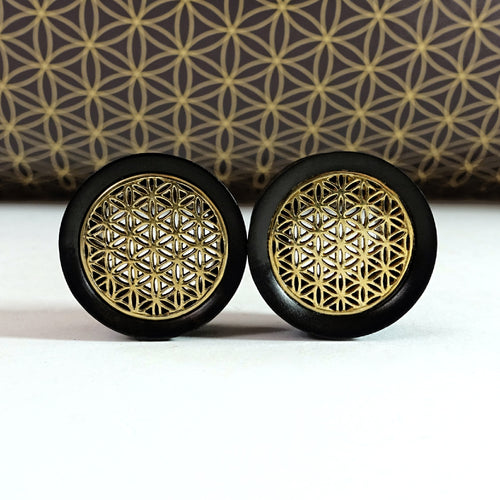

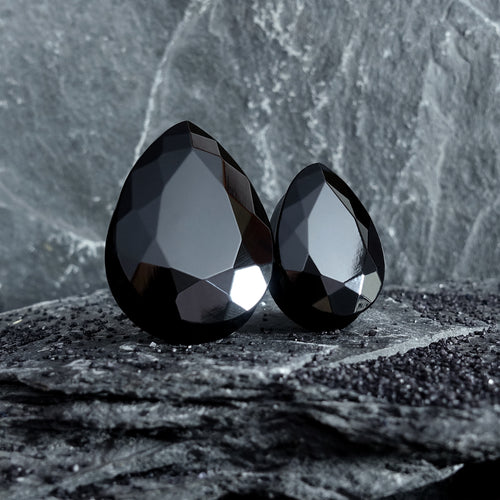
-v1652780384796.jpg?1024x1280&transform=resize=350)
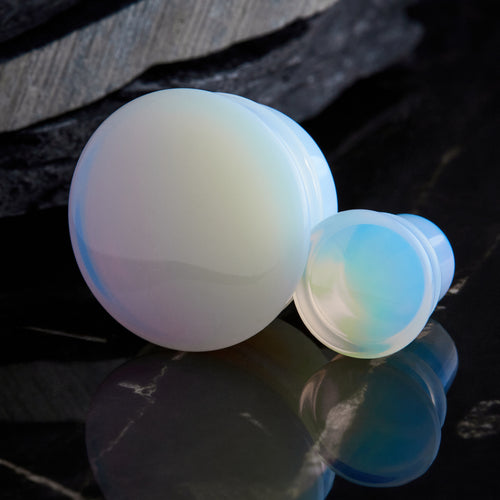
-copy-v1674726508930.jpg?2316x3088&transform=resize=350)
